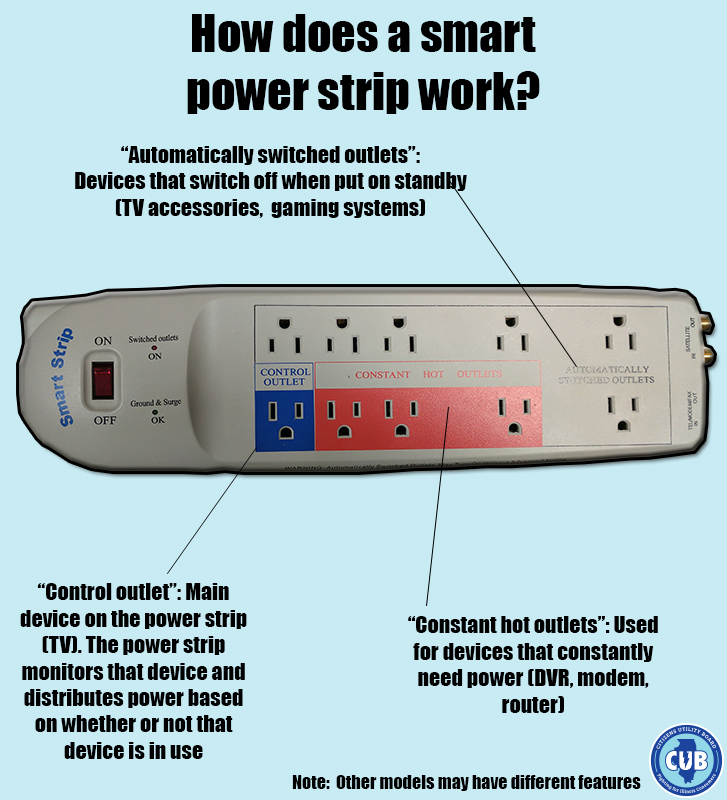
Smart power strips can be perfect for an entertainment system. For example, you would plug a TV into the “control outlet.” Devices that always need to be on, like a DVR, would be plugged into the “constant hot outlets” and other devices that don’t need to be on all the time would be in the “automatically switched” outlets.
Appliances and electronics can suck up power even when you’re not using them. This wasteful “phantom” or “vampire” power can account for up to 20 percent of residential energy use.
But a smart power strip can help tame this problem. It saves energy on devices that are on stand-by—they’re plugged in and sapping power, but aren’t being operated at the time. (See CUB talk about this topic in a recent CBS 2 Chicago story.)
Larger electronics can be damaging to your power bill, according to electricityrates.com, an electricity news site. For example, a 46-inch LCD TV that’s off but remains plugged in can cost you about $11 a month.
That’s where a smart power strip comes in handy. It can be particularly helpful with a home entertainment system, which have some components that need to stay on all the time, like a DVR, and others, like a TV or game system, that don’t. (See picture.)
Smart strips have two components: Electrical outlets and circuitry. The circuitry monitors electricity consumption and cuts off power to devices when they go into stand-by. While they all perform the same basic function, there are different kinds of smart power strips:
- Timer-equipped. These strips have outlets that are controlled by programmable timers. You can program devices to automatically turn on or off at designated times.
- Occupancy sensing. These power strips have outlets controlled with a motion detector. Devices plugged into them automatically turn off or on in response to your presence, or after a defined period of time (usually between 30 seconds and 60 minutes).
- Current sensing. These can turn outlets on or off when they detect that a device enters a low-powered sleep mode.
Smart power strips are usually more expensive–ranging in price from around $10 to $50–but can pay for themselves in electricity savings. Check with your utility to see if it offers a rebate for smart power strips. (ComEd does!)
Remember: The cheapest kilowatt-hour is the one you never use. Visit our energy efficiency page for more information on how to save on your electric bills.

